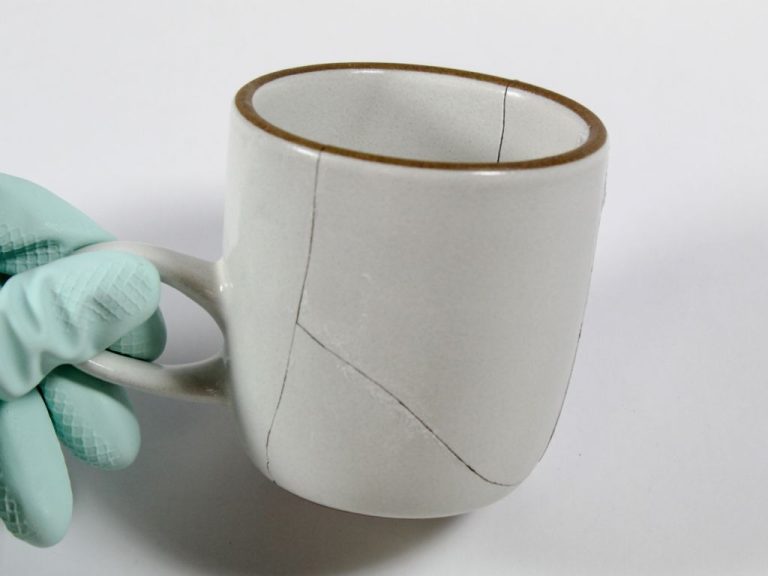Do You Need Special Glazes For Raku?
What is Raku?
Raku ware refers to a style of Japanese pottery traditionally used in Japanese tea ceremonies. The style dates back to the 16th century in Kyoto, when the potter Chōjirō, who was a close acquaintance of Sen no Rikyū, began producing simple, hand-shaped tea bowls with a lead glaze firing technique that produced a rough, handmade appearance 1. The clay bowls were removed from the kiln while still glowing hot and placed in containers with combustible materials like leaves or sawdust, which created localized reducing conditions and caused random cracking of the lead glaze. This process, which came to be known as raku, resulted in each piece being unique with its own abstract patterns and shapes.
Key characteristics of Raku ware include irregular shaped tea bowls, rough textures, rustic and spontaneous abstract designs from cracking lead glazes, and the darkened, smoky appearance of the unglazed clay surface. The style embraces imperfection and emphasizes handmade, chance effects. Firing times are rapid, around 15 minutes maximum, and the pottery absorbs carbon during the post-firing reduction process which turns the exposed clay black. Raku is considered one of the main traditions in Japanese ceramic art and is still widely practiced today 2.
Raku Glazes vs Regular Glazes
Raku glazes have a different composition and properties compared to regular glazes used for other ceramic firing techniques. Raku glazes are specially formulated to withstand the rapid firing and cooling cycles in the raku process. Here are some of the key differences:
Composition: Raku glazes have a high silica and low clay content which makes them more viscous and resistant to thermal shock. They have added fluxes like sodium and potassium carbonates to lower the melting point. Copper, iron, and other metal oxides are used to create different colors and effects.
Properties: Raku glazes are more fluid, glossier, and use a wider palette of colors compared to regular glazes. They can also incorporate special effects from materials like horsehair or leaves. Raku glazes adhere well to the clay body and do not flake or peel off.
Firing process: Raku glazes are designed to melt and mature at lower temperatures between 1600-1800°F. When removed from the kiln at peak temperature, the rapid cooling creates unique crackle patterns. Regular glazes need longer firing cycles and controlled cooling to set properly. Raku glazes must withstand fast thermal shock without breaking down.
Overall, raku glazes leverage their specialized composition and properties to create striking visual effects in raku firing that regular ceramic glazes are not capable of producing.
Making Raku Glazes
Raku glazes have some key differences from regular glazes that enable them to withstand the thermal shock of the raku firing process. According to the Raku Glaze Recipes guide from Ceramic Arts Network (https://ceramicartsnetwork.org/docs/default-source/uploadedfiles/wp-content/uploads/2015/08/15rakuglazes.pdf), raku glazes tend to contain high amounts of alumina and silica to improve thermal shock resistance. They also often include large amounts of fluxing agents like calcium, sodium, potassium, and lithium to promote glass formation at low temperatures.
Common raw materials in raku glaze recipes include kaolin for alumina, silica, and plasticity; calcined alumina and molochite for alumina; silica; feldspar for flux; calcium carbonate for flux; and bentonite for plasticity. Ratios of silica to alumina are kept high, around 3:1 to 4:1, to resist cracking from thermal shock. High fluxes like soda ash, potassium carbonate, and lithium carbonate are used to create glass at lower temperatures. Overall, the goal is to create glazes that form glass well below raku firing temperatures to survive quenching.
Applying Raku Glazes
When applying glazes to raku pottery, there are some special considerations to keep in mind compared to regular glazes. According to How to Glaze Raku Pottery – Glazing and Underglazing Raku, raku glazes should be applied thinner than regular glazes, usually around the thickness of a postage stamp. Thick glazes can lead to cracking or peeling when fired. Multiple thin layers can be built up for more color intensity.

Another unique aspect of raku glazing is combining multiple glazes on a single piece. As noted in Successful Tips and Techniques for Raku Firing, layering complementary raku glazes creates interesting visual effects after firing. For example, apply a copper red raku first, followed by layers of turquoise – when fired, the red glaze will break through the turquoise in cracks and thin areas. Bold patterns can be created by painting thick stripes or dots of contrasting glazes.
Application techniques like dipping, brushing, pouring, and sponging work for raku glazes. Allow each layer to dry before adding another. With careful application of multiple compatible raku glazes, striking results can be achieved.
Firing Raku Glazes
The firing process for raku glazes is very different from regular pottery glazing. Raku glazing requires a fast firing and cooling process to achieve the distinctive crackled effects. According to Soul Ceramics, raku ware is fired in a kiln to around 1800°F. Once it reaches temperature, the pottery is immediately removed from the kiln using long metal tongs and placed into a container filled with combustible materials like sawdust or paper. This creates a reduction atmosphere and quick cooling that gives raku glazes their unique aesthetic.
The rapid cooling from red hot temperatures causes the glaze to crack and craze as it contracts. Different effects can be achieved by controlling the cooling speed. Faster cooling leads to more cracking, while slower cooling results in smoother textures. Raku artists must work quickly once removing pots from the kiln to capitalize on the effects of the hot raku glazes before they cool and harden.
Getting Different Effects
There are many techniques raku potters use to achieve unique and interesting effects on their finished pieces. Two popular methods involve using slips and resists, as well as adding materials like copper or horse hair during the raku firing process.
Slips are made from mixing clay and water into a brushable liquid consistency. Raku potters use slips to decorate the bare clay surface before firing. When applied to the clay and fired, the slip will create variations in color and texture. For example, an iron oxide red slip painted onto the surface will turn black after being fired and reduced. Resists are materials like wax or latex that are applied to the clay before glazing. When fired, the glaze won’t adhere to areas covered in resist, creating decorative patterns and textures. This article covers some creative ways to use slips and resists in raku.
Adding materials like copper wire, sheet metal, or horse hair during the raku firing can create beautiful one-of-a-kind effects. For instance, laying a piece of copper sheet on top of the pottery during the post-firing reduction stage will cause vibrant metallic copper luster designs as it reacts with the clay and glazes. Horse hair also introduces organic carbon patterns when laid on the pottery. As the hair burns away, it leaves behind fine lines on the raku piece. Experimenting with different materials allows raku artists to achieve truly unique finishes.
Safety Considerations
Working with raku poses some unique safety hazards that potters should be aware of. Two of the main concerns are protection from extreme heat and avoiding exposure to toxic glaze ingredients.
The raku firing process involves removing red-hot pots from the kiln and placing them into containers with combustible materials to create dramatic effects through rapid cooling. However, this also means the pots and environments can reach extremely high temperatures upwards of 1000°F. Potters must take precautions to protect themselves from severe burns by wearing proper protective gear like fire-retardant clothing, leather gloves, aprons, and hoods (Source 1). Work areas should be clear of flammable objects and have fire extinguishers nearby. Assistants can help manage risks.
Many traditional raku glazes contain heavy metals like lead or cadmium which can be toxic if leached into food or drink. Consuming substances contaminated by lead glazes can cause poisoning. Modern lead-free raku glazes are safer options. However, potters should still avoid marketing raku vessels for food use without appropriate testing and certification, as the raku process may not fully seal porous clay (Source 2).
Troubleshooting Issues
Raku glazes can be tricky to get right. Here are some common issues and how to address them:
If you notice cracking or peeling of the raku glaze, this is often caused by the glaze being too thick or not fitting the clay body properly. Try thinning the glaze with water or adjusting the recipe by adding more silica or alumina (DigitalFire). A thicker clay body with more grog can also help prevent glaze peeling and cracking issues.
Glazes that end up matte instead of glossy may need a higher firing temperature or a adjustment in the flux ingredients like soda ash or potash feldspar (Ceramic Arts Daily). Adding a small amount of zirconium silicate can also help increase gloss.
If colors are not developing properly, this is likely due to the glaze not reaching the right temperature. Try increasing the firing time or max temperature slightly. The color response can also be adjusted by changing the amount of colorants like copper carbonate or cobalt oxide in the glaze recipe.
Always test glaze recipes on test tiles before applying to finished work. Be prepared to experiment with small adjustments to get the desired effects with your clay body, kiln, and firing approach.
Notable Raku Artists
Raku pottery originated in Japan and is famously associated with the Raku family of potters who popularized this technique beginning in the 16th century. Some notable Raku ceramicists known for their mastery of this artform include:
Kichizaemon Raku (1510-1592) – Founder of the Raku ware tradition in Japan. He was known for his simple, rustic tea bowls that embodied the wabi-sabi aesthetic (Steven Forbes-deSoule).
Raku Kichizaemon XV (b. 1949) – Heir to the Raku legacy who became known for his own innovative Raku pieces often featuring cracked crazing effects. His work combines ancient Raku traditions with a modern sensibility (Owlcation).
Bernard Leach (1887-1979) – British potter who studied Raku techniques in Japan and imported them to the West. He created unique Raku pieces combining Asian and British/European styles.
Paul Soldner (1921-2011) – American ceramicist and sculptor who pioneered Raku in the US in the 1950s-60s. He was known for his experimental Raku sculptures and abstract glazed vessels.
Steven Forbes-deSoule – Contemporary American Raku artist known for his beautiful iridescent midnight blue Raku glazes and serene landscape-inspired wall pieces (Steven Forbes-deSoule).
The Future of Raku
Raku continues to evolve and take on new forms as contemporary ceramic artists innovate within the technique. While staying true to the principles of traditional Japanese raku, artists are finding creative ways to put their own spin on the process through unique glazes, different firing methods, and avant-garde forms.[3] Some notable trends include:
– The use of alternative fuels like propane or wood to fire raku pieces, which allows more control over temperature and effects.[2]
– Experimenting with colored slips, lusters, stamps, stencils, and digital decals to decorate modern raku ware.[1]
– Pushing the boundaries of traditional vessel shapes, creating abstract sculptures or architectural structures.[3]
– A widening accessibility to raku techniques through workshops, allowing more hobbyists to learn the craft.
While raku originated centuries ago, it continues to captivate contemporary audiences. The spontaneity and element of surprise inherent to raku ensures its ongoing intrigue and popularity within ceramic arts communities. Yet it remains a relatively niche technique that requires special knowledge to master. Raku’s juxtaposition of ancient traditions and modern innovations will likely fuel its continued practice by avant-garde ceramic artists well into the future.



